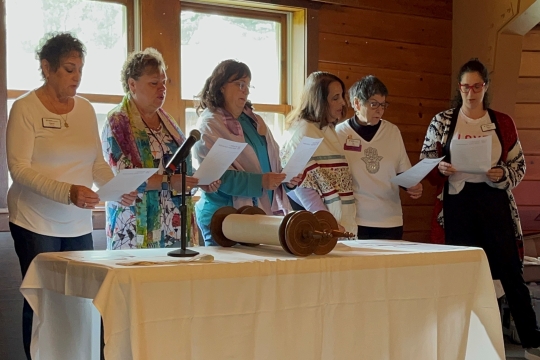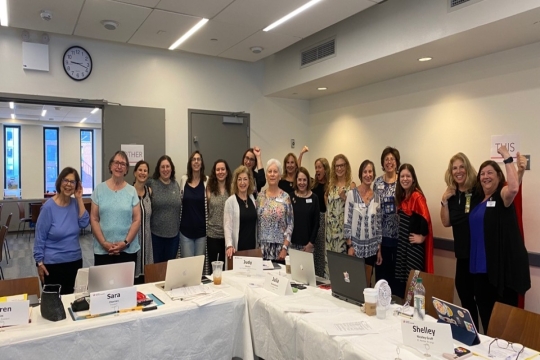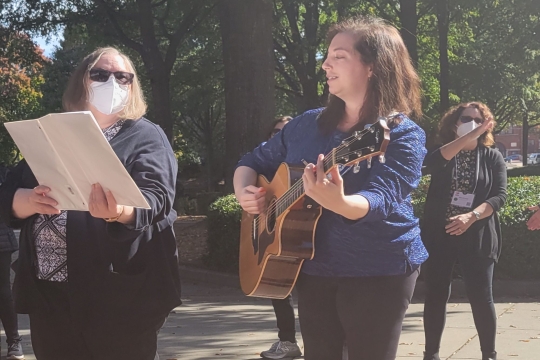At the beginning of parashah, Ki Tisa (“when you take”) Moses is still on the mountain receiving some last-minute instructions from G-d about the census, the tabernacle, purification rituals, and recipes for the holy oils and incense. He has already received the tablets written by G-d that contain the Pact between G-d and the Israelites. But, Moses has left the Israelites with Aaron as a substitute leader for too long, and they have become restless, demanding a new god since the man, Moses, does not appear to be coming back. So, Aaron, fearful of what the Israelites might do if he does not do something, makes the golden calf, builds an altar, and calls for a festival. This enrages G-d, who threatens to totally destroy the Israelites for their great sin against Him. Moses springs into action, knowing full well how weak (human) his people are, and begs G-d to reconsider. Moses dissuades God’s wrathful response and returns to the Israelites.
Now it is Moses’ turn, as leader of the people, to lose his temper at the chaos he meets. He reacts by throwing the tablets to the ground, breaking them before the people could even know what G-d expected of them. Then he orders the idol melted down, ground into powder, mixed with water and drunk by the Israelites. He even ordered those who still believed in the Covenant to kill all those who worshipped the golden calf. Perhaps, Moses thought this was better than complete annihilation. Those who remained certainly feared Moses and his G-d.
Moses returned to ask for G-d’s forgiveness for the survivors, but G-d sent a plague instead and refused to go with the Israelites to the promised land, sending an angel to lead their way. At this point, Moses puts his reputation as a chosen leader on the line, “Now, if I have truly gained Your favor, pray let me know Your ways, that I may know You and continue in Your favor. Consider, too, that this is Your people.” G-d finally accepts that atonement has been achieved and agrees to lead the Israelites into the promised land. Moses, full of excitement at achieving his goal, then makes the audacious request, “Oh, let me behold Your Presence!” G-d graciously agrees to “make all My goodness pass before you,” but seeing G-d’s face would be fatal, so Moses is offered a view of G-d’s back.
In this parashah, Moses spends a good deal of time alone with G-d, first finalizing the Pact between the Israelites and G-d, then trying to intervene when their great sin enrages G-d. We find Moses pleading for the continued existence of his people, later negotiating for forgiveness for their sin, and finally begging for a sign that G-d is truly with them by leading their way to the promised lands. By the end of their interactions, Moses has restored the covenant, replaced the broken tablets with a new set that he wrote, received a few holy festival days and established
G-d’s gift of a weekly seventh day of rest (Shabbat). As a result of his close intimacy with G-d, Moses has changed. Physically, his face radiates with G-d’s presence. As a leader, he has also demonstrated courage, confidence, and talent in mediation.
As WRJ leaders, we can draw some valuable lessons from this story that highlights Moses’ leadership style. Especially at this time of year, when we are seeking potential leaders among our members, or deciding whether to apply for a leadership position for ourselves, it might be valuable to identify qualities employed by successful leaders, like Moses:
- Moses acts as the voice of reason (most of the time).
- Moses is both humble and confident.
- Moses knows his people’s strengths and weaknesses.
- Moses keeps the needs of his people at the forefront of his efforts.
- Moses uses his own strength (negotiating) and weakness (anger) to get things done.
- Moses understands the importance of forgiveness.
- Moses spends quality time with G-d and is not afraid to be audacious.
- Moses lets his joy for the work radiate.
Leadership in WRJ is not as difficult as leading the Israelites out of Egypt to the Promised Land, but it can be challenging, fun and rewarding. If you can demonstrate even some of these qualities, I recommend that you apply. Think of all the great leaders you will meet.
Zabe Williams is a WRJ Board member; WRJ Midwest District Vice President of Development and WRJ Projects, and a Past President of the Temple Beth-El Sisterhood in South Bend, IN.
Related Posts

Parashat Yom Rishon shel Rosh HaShanah

Cultivating a Culture of Accountability and Belonging


